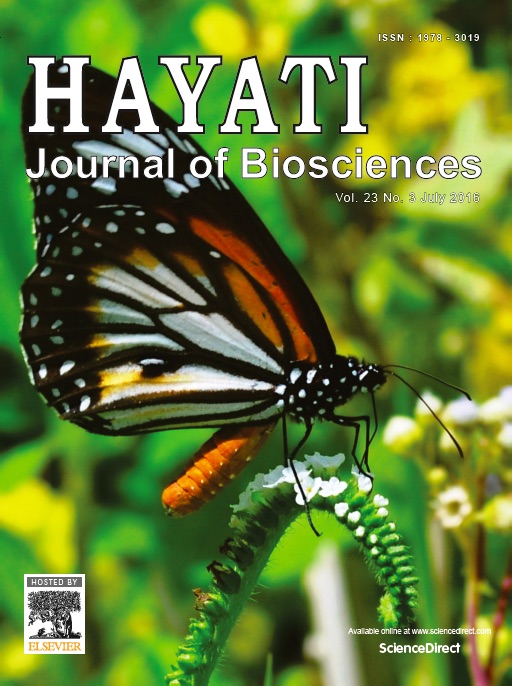Elimination of Chloramphenicol by Tiger Shrimp (Penaeus monodon) and White Shrimp (Litopenaeus vannamei)
Abstract
Chloramphenicol (CAP) has been illegally used in many shrimp farms in South East Asia, including Indonesia. We performed an experiment of elimination simulation of CAP in tiger shrimp (Penaeus monodon) and white shrimp (Litopenaeus vannamei). After 5 days of depuration process, the concentration of CAP in P. monodon decreased to 94.85% (muscle), 97.98% (cephalothoraxes), and 90.30% (exoskeleton). The elimination half-life of CAP in P monodon was 0.596 day in the muscle, 0.716 day in cephalothorax, and 0.437 day in exoskeleton. On the other hand, concentrations of CAP in L. vannameidecreased to 97.74% (muscle), 90.30% (cephalothoraxes), and 97.63% (exoskeleton). The elimination half-life of CAP in L. vannamei was 0.6624 day (muscle), 0.859 day (cephalothorax), and 0.796 day (exoskeleton). CAP was retained better by P. monodoncompared to L. vannamei.Downloads
HAYATI J Biosci is an open access journal and the article's license is CC-BY-NC. This license lets others distribute, remix, tweak, and build upon author's work, as long as they credit the original creation. Authors retain copyright and grant the journal/publisher non exclusive publishing rights with the work simultaneously licensed under a https://creativecommons.org/

























.png) IPB University
IPB University Department of Biology
Department of Biology The Indonesian Biological Society
The Indonesian Biological Society 

